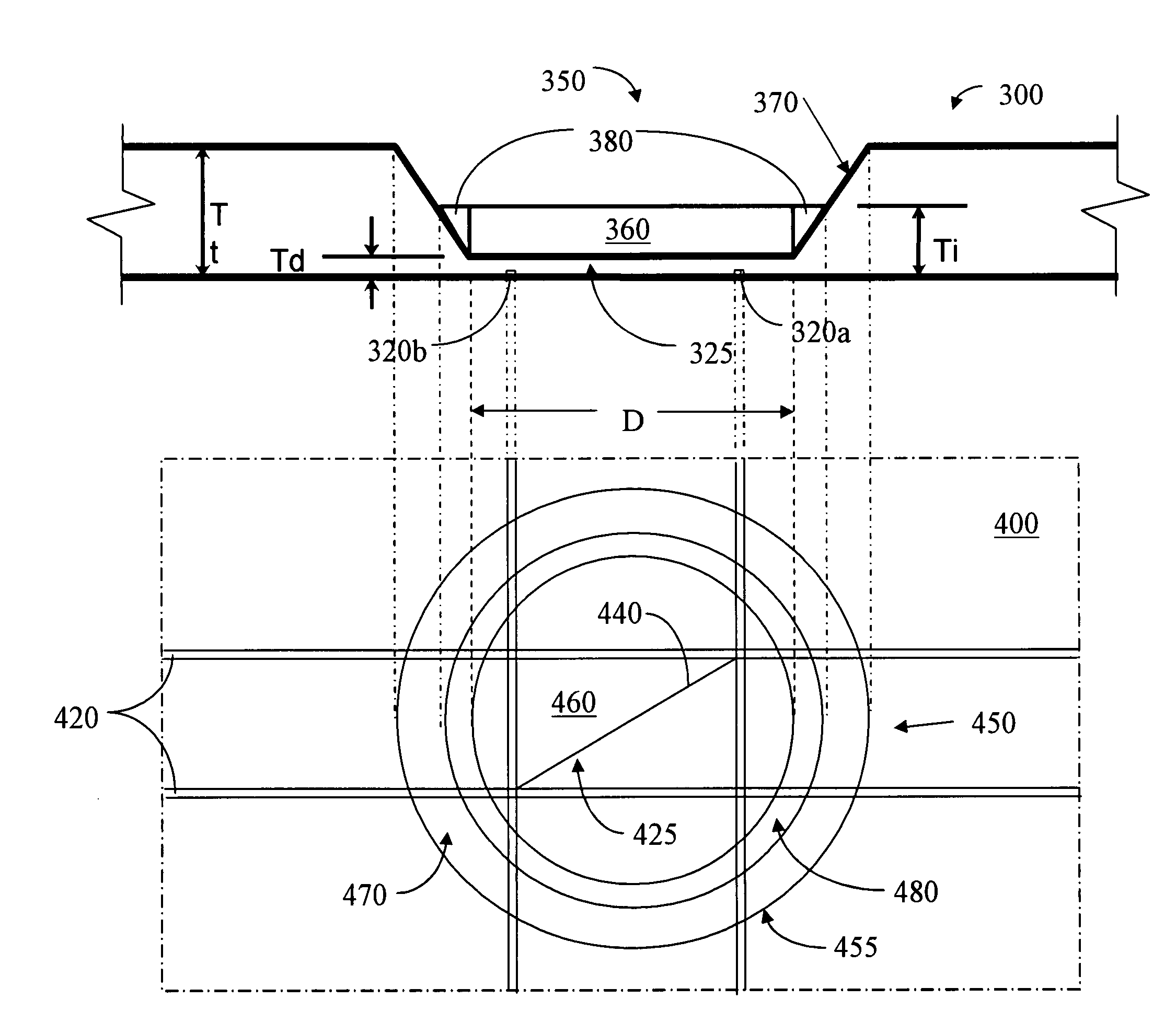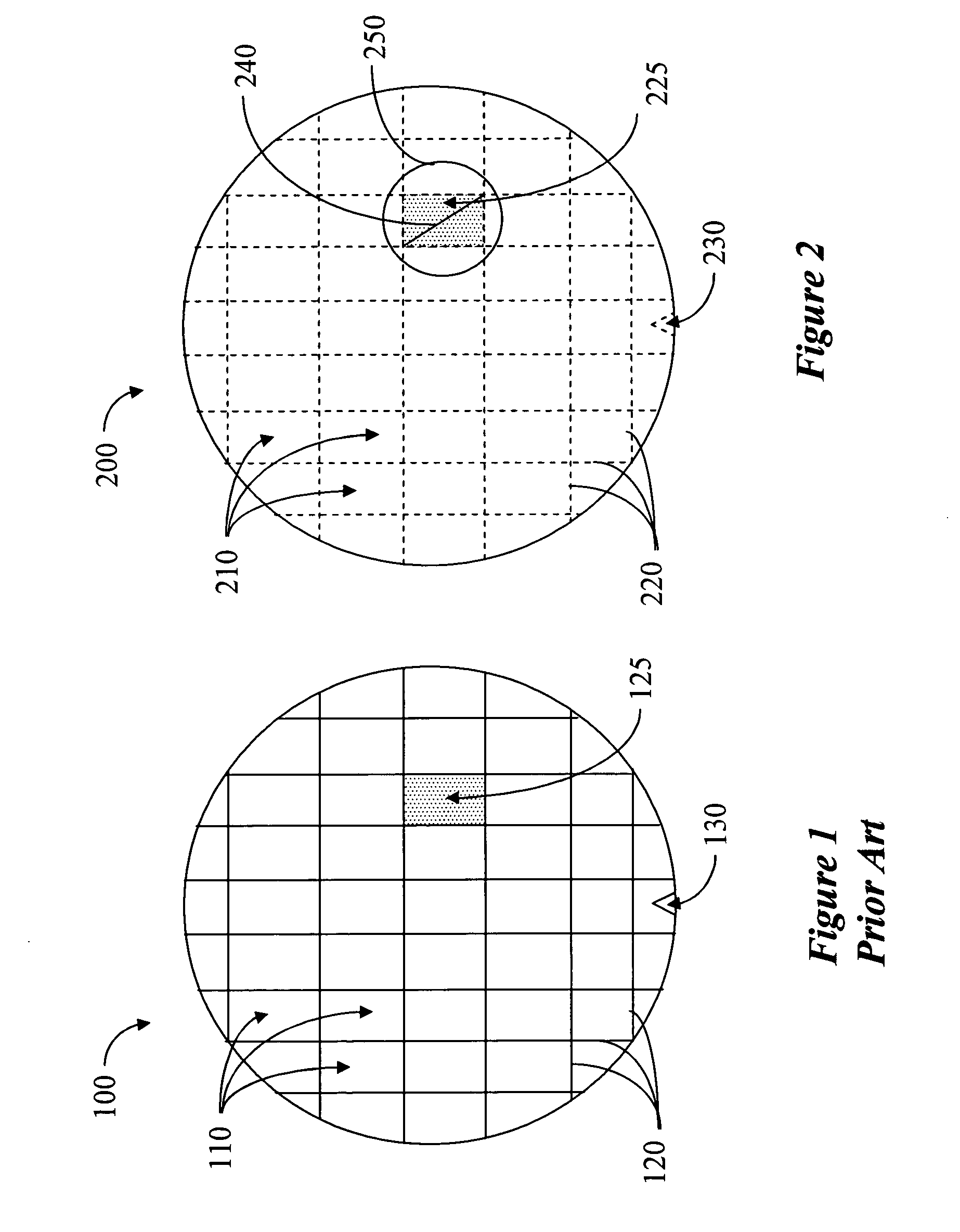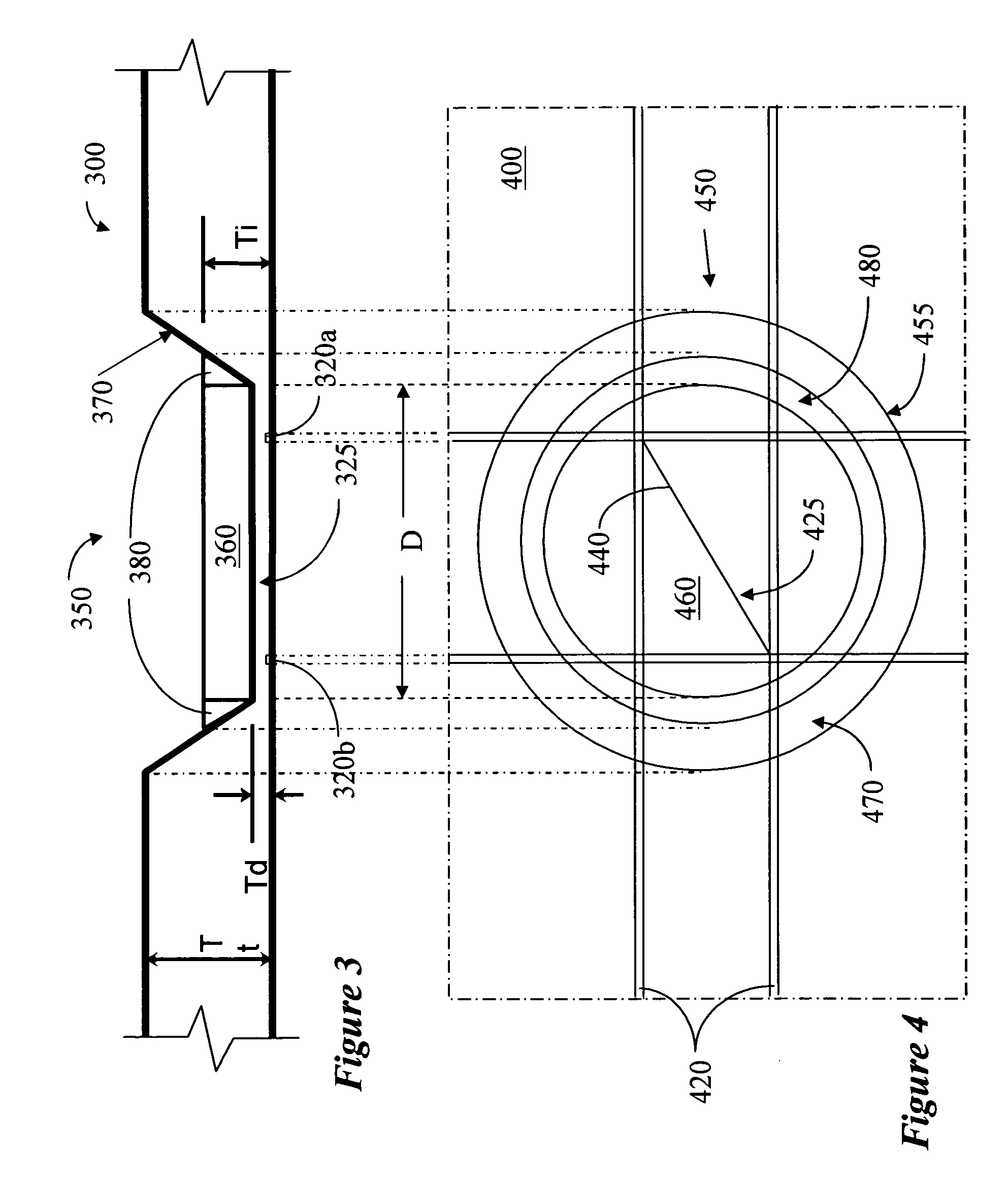Method for local wafer thinning and reinforcement
a local wafer and reinforcement technology, applied in semiconductor/solid-state device testing/measurement, semiconductor/solid-state device details, instruments, etc., can solve the problems of reducing the physical integrity of the entire wafer, reducing the thickness of the doped layer, and difficult to image the dut through a thick doped silicon layer, etc., to achieve the effect of maintaining the integrity of the wafer
- Summary
- Abstract
- Description
- Claims
- Application Information
AI Technical Summary
Benefits of technology
Problems solved by technology
Method used
Image
Examples
Embodiment Construction
[0025]An embodiment of the invention will now be described in details with reference to FIGS. 2 and 3. In FIG. 2, wafer 200 is shown from the backside thereof, as indicated by scribe lines 220 being drawn in broken line format. The die 225, that is selected to be inspected, is again shown shaded. As is known, dies 225 would normally be a square or a rectangle having a long diagonal 240. Upon selection of the die to be inspected, its long diagonal 240 is measured. Then, a circular area to be thinned is determined, having a diameter which is larger than the measured diagonal.
[0026]FIG. 3 is a partial cross-section of a wafer 300 prepared according to one embodiment of the invention. In FIG. 3, the boundaries of die 325 are marked by scribe lines 320a and 320b. The total thickness, Tt, of the wafer is on the order of several hundreds of microns, e.g., 650 microns. An area 350 over die 325 is thinned to a thickness Td of about 100 microns. As is shown, the area 350 has a diameter, D, wh...
PUM
 Login to View More
Login to View More Abstract
Description
Claims
Application Information
 Login to View More
Login to View More - R&D
- Intellectual Property
- Life Sciences
- Materials
- Tech Scout
- Unparalleled Data Quality
- Higher Quality Content
- 60% Fewer Hallucinations
Browse by: Latest US Patents, China's latest patents, Technical Efficacy Thesaurus, Application Domain, Technology Topic, Popular Technical Reports.
© 2025 PatSnap. All rights reserved.Legal|Privacy policy|Modern Slavery Act Transparency Statement|Sitemap|About US| Contact US: help@patsnap.com



